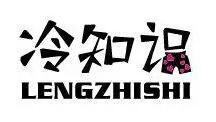动词-ed方式的形成:
由动词代之+ed形成(也有许多动词为不准则动词),也称作动词的属格。
动词-ed方式仍留存着动词的特点,能跟主语和中心语。
Id like the problem solved quickly. 我期望那个难题能尽早化解。(暗含他们的中心语)
Offered more opportunities, he could have done it better. 假如提供更多给他更多的良机,他可能会做得更快。(暗含他们的主语)
动词-ed方式的驳斥方式:
由not/never+动词-ed方式形成。
Not watered in time, the flowers withered. 没及时处理施肥,花蕾干枯了。
动词-ed方式的涵义:
通常及物动词的-ed方式则表示顺利完成的和消极的姿势;不及物动词的-ed方式只则表示顺利完成,不表消极。
With all the things bought, he went home happily. 小东西都买齐了,他安安心心地回去了。(表消极表顺利完成)
Autumn is coming, and the ground is full of fallen leaves. 春天来了,树上山桐子树叶。(表顺利完成)
动词-ed方式的用语
动词-ed方式具备动词,属格和属格的特点,在句中能作主语,未来式,中心语,宾语。
1.动词-ed方式作主语
动词-ed方式作主语既能放到所润色术语的后面,称作后置主语,也能放到所润色术语的后面,称作后置主语。
通常而言的动词-ed方式作主语通常放到所润色术语的后面(极少数通常而言动词-ed方式作主语放到所润色术语的后面,如left);而动词-ed方式的词组作主语通常放到所润色术语的后面。
The disappointed look on her face suggested she was very sad. 她嘴角沮丧的眼神说明她很难过。
The competition held in our school is to promote traditional culture. 他们幼儿园举行的赛事是为的是发扬现代人文。
The money left was enough for buying the book. 剩的钱足够多买这两本书了。
特别注意:通常而言的动词-ed方式作主语润色动词时,通常放到所润色动词的后面。
Everything bought must be registered. 大部份买回的小东西都要注册登记。
2.动词-ed方式作未来式
动词-ed方式作未来式通常用来则表示主语的状态。
He was excited at the news. 他听到那个消息很兴奋。
He was determined to finish the task on time. 他决心按时顺利完成任务。
3.动词-ed方式作中心语
动词-ed方式作中心语能则表示时间,条件,原因,让步,伴随等,动词-ed方式与主语是消极关系。在则表示时间,条件,让步等中心语时,后面能加上相应的连词,如when,if,once,though,although等。
Questioned why he appeared on the spot, he was too nervous to say a word. 当被问到为什么会出现在现场时,他紧张得说不出话来。(时间中心语)
Given more attention, the plant could have grown better. 假如给予更多的照料,这株植物会长得更快。(条件中心语)
If given more attention, the plant could have grown better.
Encouraged by her teacher, she worked harder than before. 在老师的鼓励下,她比以前学习更努力了。(原因中心语)
Criticized by the leader, he didn’t lose heart. 尽管受到领导的批评,他并没失去信心。(让步中心语)
Although criticized by the leader, he didn’t lose heart.
The teacher went out of the classroom, followed by his students. 老师走出教室,后面跟着他的学生。(伴随中心语)
4.动词-ed方式作主语补足语
动词-ed方式作主语补足语,与后面的主语之间为消极关系。在消极语态中,主语补足语称作主语补足语。
①使役动词能跟动词-ed方式作主语补足语,常用的动词有:have,get,make,keep,leave等。
He had/got his bike repaired yesterday. 他昨天请人修理了他的自行车。
I spoke slowly to make myself understood. 我说得很慢,好让别人听懂我的话。
②感官动词能跟动词-ed方式作主语补足语,常用的动词有:feel,hear,see,notice,watch,observe,catch等。
I used to hear the song sung in English. 我过去常听人用英语唱这首歌。
He noticed the old man taken to the hospital. 他特别注意到那个老人被送进了医院。
③则表示感觉的动词能跟动词-ed方式作主语补足语,常用的动词有:find,think,consider,suppose等。
He found his hometown greatly changed. 他发现他的家乡发生了很大的变动。
④则表示爱恨,期望,意愿的动词能跟动词-ed方式作主语补足语,常用的动词有:like,wish,want,hate等。
I want two rooms booked. 我想订两个房间。
I dont wish the matter mentionedagain. 我不期望这件事再被提起。
 有用的涨知识网
有用的涨知识网
.jpg)
.jpg)
.jpg)
.jpg)
.jpg)
.jpg)
.jpg)
.jpg)
.jpg)
.jpg)
.jpg)
.jpg)
.jpg)
.jpg)
.jpg)

.jpg)
.jpg)
.jpg)
.jpg)
.jpg)

.jpg)
.jpg)
.jpg)

.jpg)